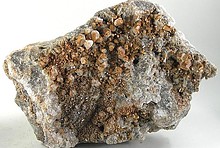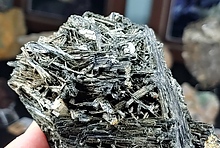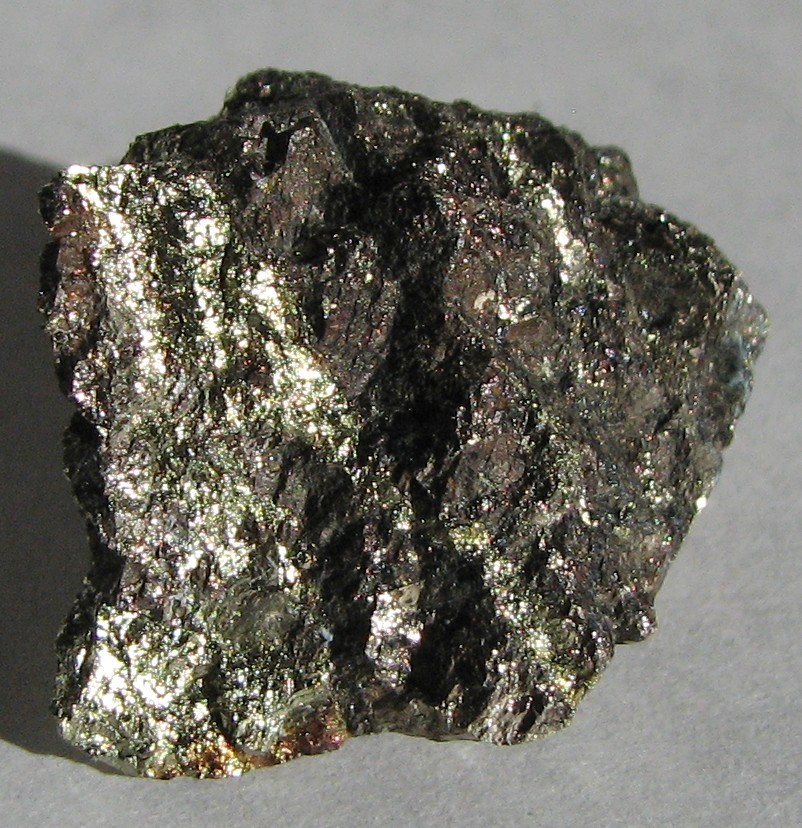Home PageAbout MindatThe Mindat ManualHistory of MindatCopyright StatusWho We AreContact UsAdvertise on Mindat
Donate to MindatCorporate SponsorshipSponsor a PageSponsored PagesMindat AdvertisersAdvertise on Mindat
Learning CenterWhat is a mineral?The most common minerals on earthInformation for EducatorsMindat ArticlesThe ElementsThe Rock H. Currier Digital LibraryGeologic Time
Minerals by PropertiesMinerals by ChemistryAdvanced Locality SearchRandom MineralRandom LocalitySearch by minIDLocalities Near MeSearch ArticlesSearch GlossaryMore Search Options
The Mindat ManualAdd a New PhotoRate PhotosLocality Edit ReportCoordinate Completion ReportAdd Glossary Item
Mining CompaniesStatisticsUsersMineral MuseumsClubs & OrganizationsMineral Shows & EventsThe Mindat DirectoryDevice SettingsThe Mineral Quiz
Photo SearchPhoto GalleriesSearch by ColorNew Photos TodayNew Photos YesterdayMembers' Photo GalleriesPast Photo of the Day GalleryPhotography
╳Discussions
💬 Home🔎 Search📅 LatestGroups
EducationOpen discussion area.Fakes & FraudsOpen discussion area.Field CollectingOpen discussion area.FossilsOpen discussion area.Gems and GemologyOpen discussion area.GeneralOpen discussion area.How to ContributeOpen discussion area.Identity HelpOpen discussion area.Improving Mindat.orgOpen discussion area.LocalitiesOpen discussion area.Lost and Stolen SpecimensOpen discussion area.MarketplaceOpen discussion area.MeteoritesOpen discussion area.Mindat ProductsOpen discussion area.Mineral ExchangesOpen discussion area.Mineral PhotographyOpen discussion area.Mineral ShowsOpen discussion area.Mineralogical ClassificationOpen discussion area.Mineralogy CourseOpen discussion area.MineralsOpen discussion area.Minerals and MuseumsOpen discussion area.PhotosOpen discussion area.Techniques for CollectorsOpen discussion area.The Rock H. Currier Digital LibraryOpen discussion area.UV MineralsOpen discussion area.Recent Images in Discussions
Identity HelpOntario Pentlandite

7th Jan 2010 23:08 UTCLloyd Van Duzen Expert
I collected this myself early last fall. Its aproximately 20mmx22mmx5.5mm and is quite dense. 5g per cubic centimeter or something like that.
Just thinking I should research some of the more dense metallic minerals and do a comparison to say Galena, Gold and some of the Copper sulphides.
I didn't check but I wonder if Rock Currier has any other pics of Pentlandite from Ontario?
Here is my Iron Nickel sulphide pics.
Still good to know you guys are out there.
Thanks.
7th Jan 2010 23:20 UTCRob Woodside 🌟 Manager

7th Jan 2010 23:38 UTCLloyd Van Duzen Expert
I thought some Pentlandite was magnetic and some not. It has a greenish black streak, hardness of 3 or 4. and is quite dense. conchoidal as well.
yes I would think it has oxidized, but for some reason I think it looks the same as the day i collected it. Norite seems familiar, I have seen the name recently in my research.
pyrite, chalcopyrite, bornite, and copper have all been sought in the early to mid last century in this area. Even mention of Pentlandite occurances not all that far away.
Whay about crystal habit rob? Have you seen pyrite show this crystal habit?
I think its Pentlandite.
7th Jan 2010 23:52 UTCRob Woodside 🌟 Manager
I don't see any xls. Pentladite is considered a massive mineral, but I did have some ideomorphic xls frozen in chalco from thr Monshe Tundra.

8th Jan 2010 01:22 UTCLloyd Van Duzen Expert
Chalco is a very good possibilty I believe I have a sample. There is a slight difference in color, chalc is more dully brass yellow and Pentlandite is more brighter yellow. And one would think that oxide can change the surface color in copper sulphides. Pyrites show a silvery color on fresh fractures and when oxidation occurs it changes to that dull brassy yellow. I have witnessed this before. chalcopyrite tends to have the brassy yellow because of the iron content then can change to the irridescent colors more associated with it through oxidization. In the samples I have, there is no signs of the irredescent colors, just the metallic brassy yellow. But differ in crystal habit, fracture and color.
Trying not to place to much focus on color, so the other tests come in to play.
You got some good points about the chalcopyrite. I am trying to rule out other pyrite's because of the crystal habit, hardness and fracture.
Thought I was making a confident, educated guess. That identity comfirmation sure is hard to get a hold of.
And Rob I know your a well educated guy with lots of history and experience so your word is important to me.
I have been busy on the geological prospective the last couple months, planning prospects for minerals I seek.
I did get The National Audubon Society Feild Guide to Rocks and Minerals, right full of Rock Currier's pics for christmas and it gave me the first clue about the Pentlandite. So thats a confidence builder for me. It had me confident enough to come and post it on Mindat.
Guys like you and rock bring alot to the table when the mysterious world of minerals has alot of us guessing.
Thanks again Rob.
8th Jan 2010 01:48 UTCRob Woodside 🌟 Manager
8th Jan 2010 13:00 UTCRock Currier Expert
I haven't gotten to uploading any images of P minerals, but I checked and I have no Images of Pentlandite to upload. Sorry.
8th Jan 2010 16:11 UTCReiner Mielke Expert

8th Jan 2010 16:21 UTCDonald Peck
8th Jan 2010 19:34 UTCRob Woodside 🌟 Manager
8th Jan 2010 19:39 UTCMark Heintzelman 🌟 Expert
is Pyrrhotite/Nickeloan Pyrrhotite's streak as brown/bronzy as Pentlandite? Not exactly conclusive mind you, but on a confirmed massive specimen from Sudbury I believe I've been able to observe areas, using porcelain tipped probes, that had different streak coloration, i.e. seemed discernible.
I've actually been searching in this way through many samples of Nickeloan Pyrrhotite from the Gap Mine, for evidence (i.e. a specimen) of the elusive (possibly erroneously reported) Pentlandite from this deposit. Unfortunately I've had no success thus far (no real discernible color variation/streak). I do need a very easy and inexpensive initial test to warrant any additional analysis, so I would like to know from you and others with experience, if you believe my assumption of what I thought I observed on the Sudbury piece to be simply a faulty assumption.
Mine is a "needle in a haystack" kind of situation, so I don't want to waste a great deal more effort with this method if you think it unlikely to yield the desired result. BTW, I surely appreciate this string and any input here from others as well. thanks much!
MRH
8th Jan 2010 19:42 UTCRob Woodside 🌟 Manager
8th Jan 2010 20:10 UTCReiner Mielke Expert

8th Jan 2010 22:37 UTCBob Southern
8th Jan 2010 23:20 UTCRob Woodside 🌟 Manager

9th Jan 2010 16:10 UTCDonald Peck
Dimethyl glyoxime is a very sensitive test for nickel, and one easy to do; but; the iron should be removed first. Dissolve a grain of mineral in HNO3, neutralize and make slightly basic with NH4OH, and add a drop or two of dmg solution. A red lake indicates Ni. The OH- will precipitate a brownish red Fe(OH)3 that should be filtered out before adding dmg to the solution. The test can also be done on a microscope slide sized plate of quartz (not polished) streak plate. A 1 cm streak is sufficient. Add drops of chemicals onto the streak. Heat the plate gently in an alcohol flame and agitate with a glass stirring rod to dissolve the streak. I believe you can obtain the chemicals from onlinesciencemall.com (Florida).
A cold borax bead from the oxidizing flame that is red or brown in color indicates Ni ( hot red could be Fe). A cold sodium ammonium acid phosphate bead from the oxidizing flame for Ni is yellow or orange.
9th Jan 2010 16:38 UTCPavel Kartashov Manager
I am think, that it is possible to find much more valuable pentlandites on the deposit.;)
9th Jan 2010 16:54 UTCJames Christopher
9th Jan 2010 17:35 UTCReiner Mielke Expert
9th Jan 2010 18:31 UTCRay Hill Expert

9th Jan 2010 18:47 UTCMatthew Neuzil
9th Jan 2010 18:48 UTCMatt Neuzil Expert
Matthew Neuzil Wrote:
-------------------------------------------------------
> the photos look like something foliated and
> stained like a mica. the hardness you mention
> would also fit.

10th Jan 2010 14:18 UTCLloyd Van Duzen Expert
I guess the big question is that this specimen is Pyrite instead of Pentlandite.
Some of you make reference to "parting". Could someone explain this to me?
The fact that this sample is in massive crystalline habit, tends to make me believe it isn't Pyrite. Thus far in my experience and research as well
as in my collection, I have aquired Pyrite in cubic crystal structure and its the only real Pyrite in my collection.
I have copper sulphides specimens showing 3 or 4 different crystal habits, from massive as in the pics posted on this thread and in the cubic structure and also in what I believe to be a microcrystalline habit. I will post pics later today for observation.
As for Pyrrhotite association well there is Pyrrhotite in my area. I just havn't aquired a sample yet, and from what I have read from Reiner, It is harder to decern color differentiating Pyrrhotite from Pentlandite and the presence of Pyrrhotite would help confirm Pentlandite.
I'm not about to get into the chemical tests to get conclusive identity at this point, but thanks Don for the details and procedure.
I think it should be stated for the record that there is an abundance of copper sulphides in Grenville province and the Central Gneiss Belt.
Not as much as Superior province by any means as well as the central medisectory belt.
Occurance near me include Chalco, Pyrite, Pyyrhotite, Pentlandite, Bornite. So I did make some comparisons and deductions from research and did become confident in Pentlandite for its Identity.
Lets say Pyrite and chalco are indeed the closest match thus far so I will not rule them out.
Thanks guys so much for your contribution, much appreciated.
Be back soon.
10th Jan 2010 16:41 UTCReiner Mielke Expert
For all practical purposes a parting and cleavage look the same. Here is a quote from Sinkankas's "Mineralogy for Amateurs" ( still the best book out there for beginners, get one!). When you break a sample " If a more or less flat fracture is developed and is related consistently to certain planes in the crystal, it is said to be cleavage. A cleavage-like fracture due to separation between twins is parting."
Pyrite does not have cleavage or parting ( at least not one that is usually evident) and is usually a metallic bright greenish-gold color ( that does not tarnish easily), whereas pentlandite has a parting ( only observed in coarse grained material) and is usually metallic grey to brownish-gold (due to tarnishing which is rapid).
Another thing, I find the color descriptions given in the textbooks for metallic minerals are practically useless for hand samples, someone needs to come up with a better system of description!

10th Jan 2010 16:43 UTCDonald Peck

10th Jan 2010 20:58 UTCLloyd Van Duzen Expert
It is pyrite for sure. By elimination now I am down to one last questionable specimen. I mentioned it in my reference to the microcrystalline Pyrite. I will be working on a photo post for your opinions aswell.
Credit should be give to Rob for mentioning it first to me, but as I said I overlooked that in my physical property comparison of my samples.
I did try and reply and ask about "parting" but couldn't post early enough.
I have done a little reading about both Rob and Reiner and touched on some history. I still havn't had the chance to say thanks to Maggie for "Minerals for the Collector" by Sabina.
Thanks so much for all your wisdom and knowledge. I am learning constantly.
My apologies to whom I may have mislead this time.




Mindat.org is an outreach project of the Hudson Institute of Mineralogy, a 501(c)(3) not-for-profit organization.
Copyright © mindat.org and the Hudson Institute of Mineralogy 1993-2024, except where stated. Most political location boundaries are © OpenStreetMap contributors. Mindat.org relies on the contributions of thousands of members and supporters. Founded in 2000 by Jolyon Ralph.
Privacy Policy - Terms & Conditions - Contact Us / DMCA issues - Report a bug/vulnerability Current server date and time: April 16, 2024 11:40:36
Copyright © mindat.org and the Hudson Institute of Mineralogy 1993-2024, except where stated. Most political location boundaries are © OpenStreetMap contributors. Mindat.org relies on the contributions of thousands of members and supporters. Founded in 2000 by Jolyon Ralph.
Privacy Policy - Terms & Conditions - Contact Us / DMCA issues - Report a bug/vulnerability Current server date and time: April 16, 2024 11:40:36












